Research at the Observatory
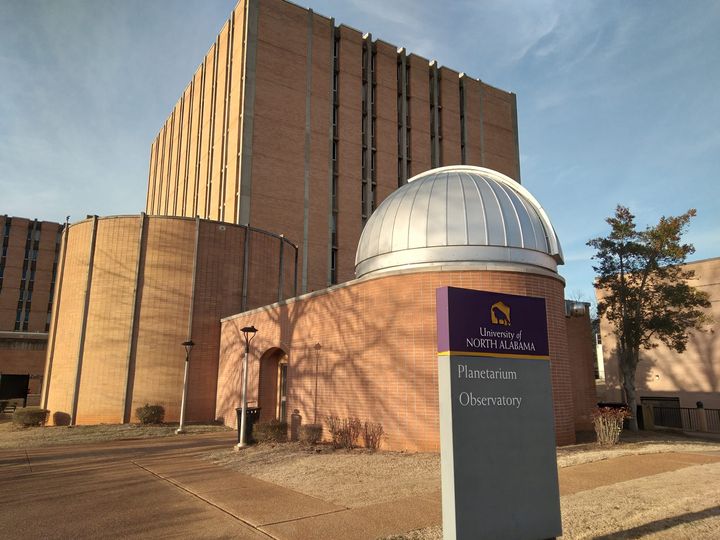
"The most incomprehensible thing about the Universe is that it is comprehensible." A. Einstein.
Activity at the UNA Planetarium and Observatory is not restricted to public education. We have active research programs using the UNA Observatory. We work with groups such as the American Association of Variable Star Observers (AAVSO) to support NASA research such as HST and Chandra observatories, and contribute AAVSO observing campaigns. We also study double stars, variable stars and binary stars. This work provides opportunities for research for undergraduate students, teachers and their students, and is regularly presented at scientific meetings and scientific journals. We hope to involve local middle and high school students and amateur astronomers in our research programs.
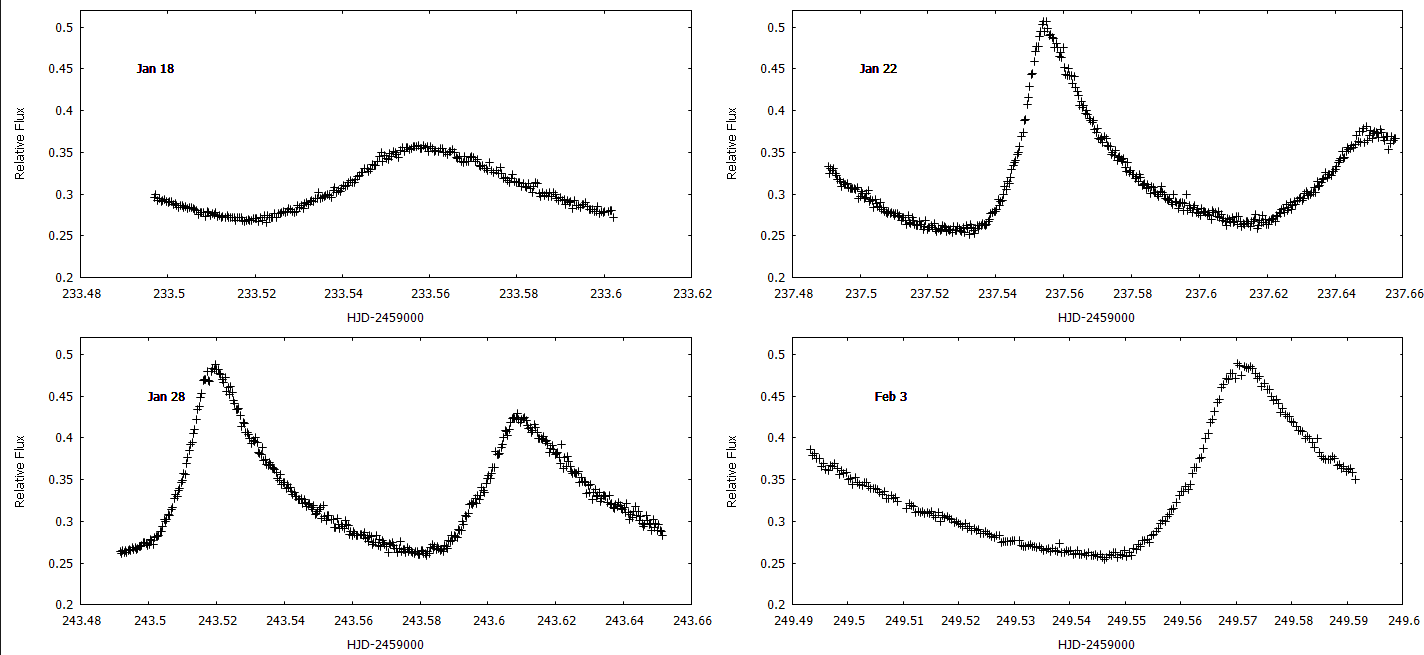
Light curves of the pulsating star RV Ari, obtained using the UNA Observatory by students Hannah Miller and Emelia Abst.
Telescope
The main telescope is a Celestron 0.36m (14-inch) Schmidt Cassegrain telescope on a Paramount ME II robotic mount.
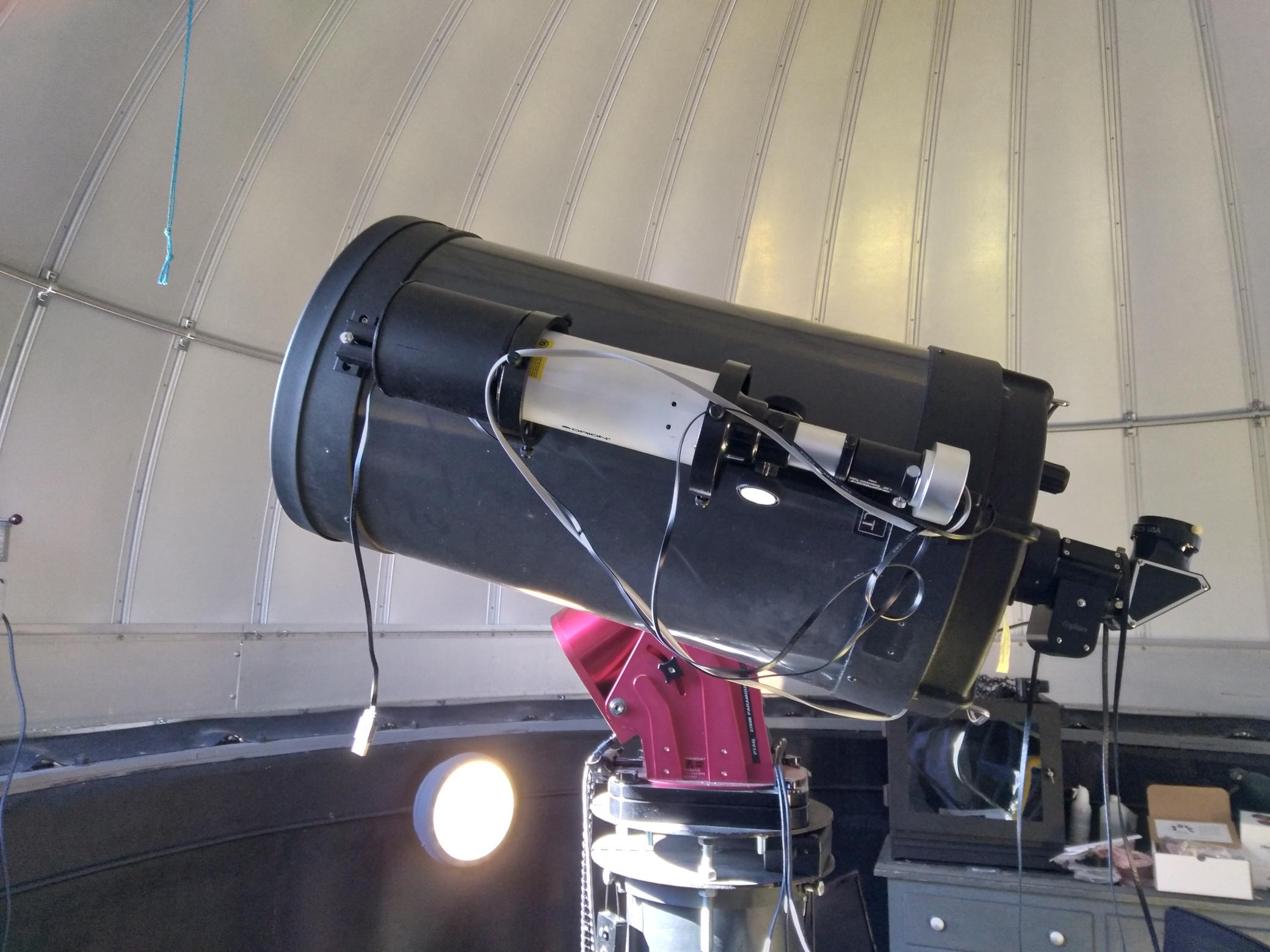
The 0.36m telescope.
Instruments
We are equipped with instruments for imaging and spectroscopy.
Imaging
Our main imager has been a SBIG ST10 CCD camera. We are transitioning to a new SBIG STC-428-P CMOS camera. This should allow improved sensitivity, faster readout and multi-color BVRI standard photometry.
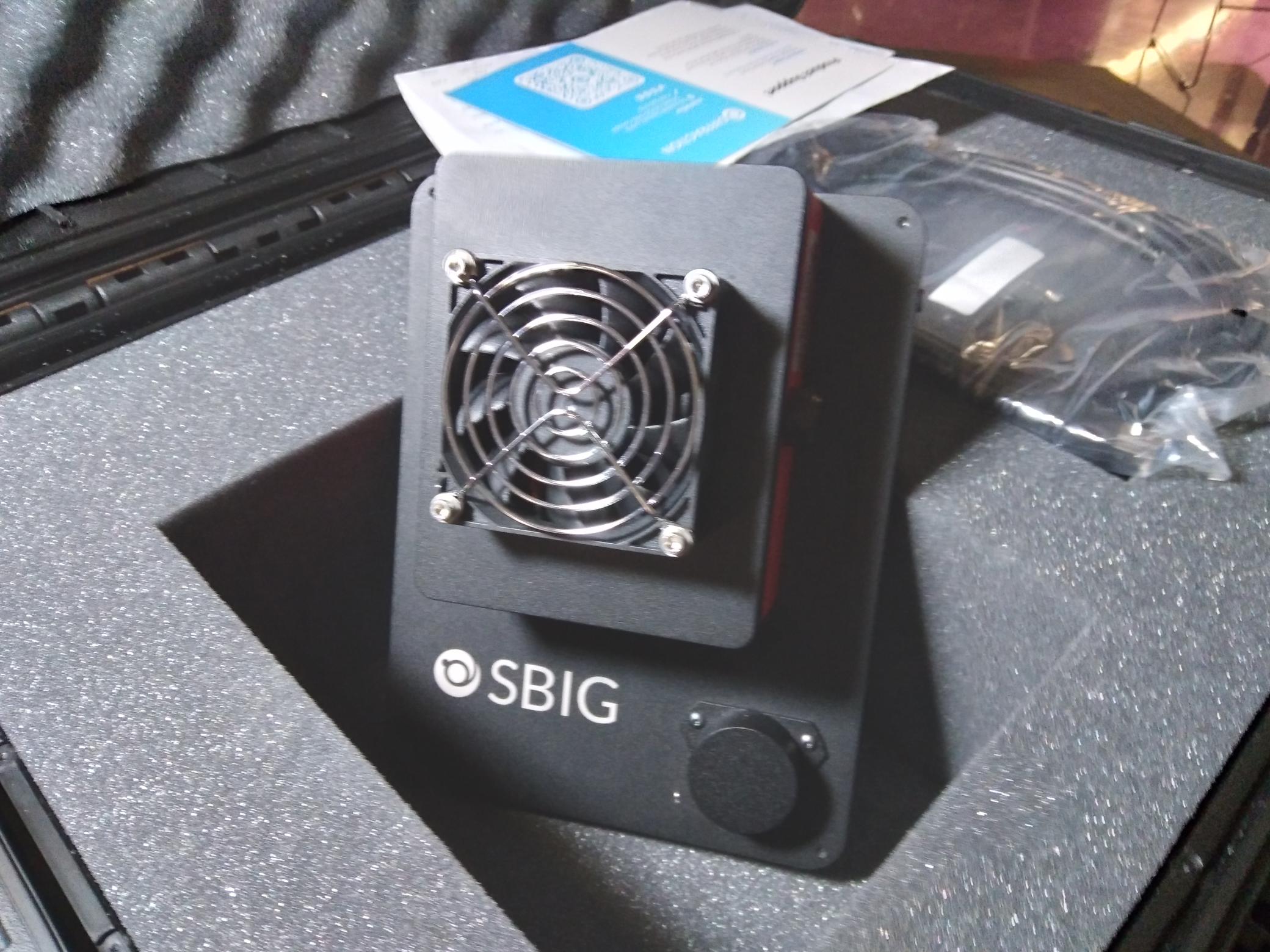
The new CMOS camera.
Spectroscopy
We are in the process of commissioning our Shelyak LHires III spectrograph. this should allow us to begin astrophysical studies of variables stars anyhow their spectra change over time. We will partner with colleagues at the DDO, in Richmond Hill, Ontario for this work.
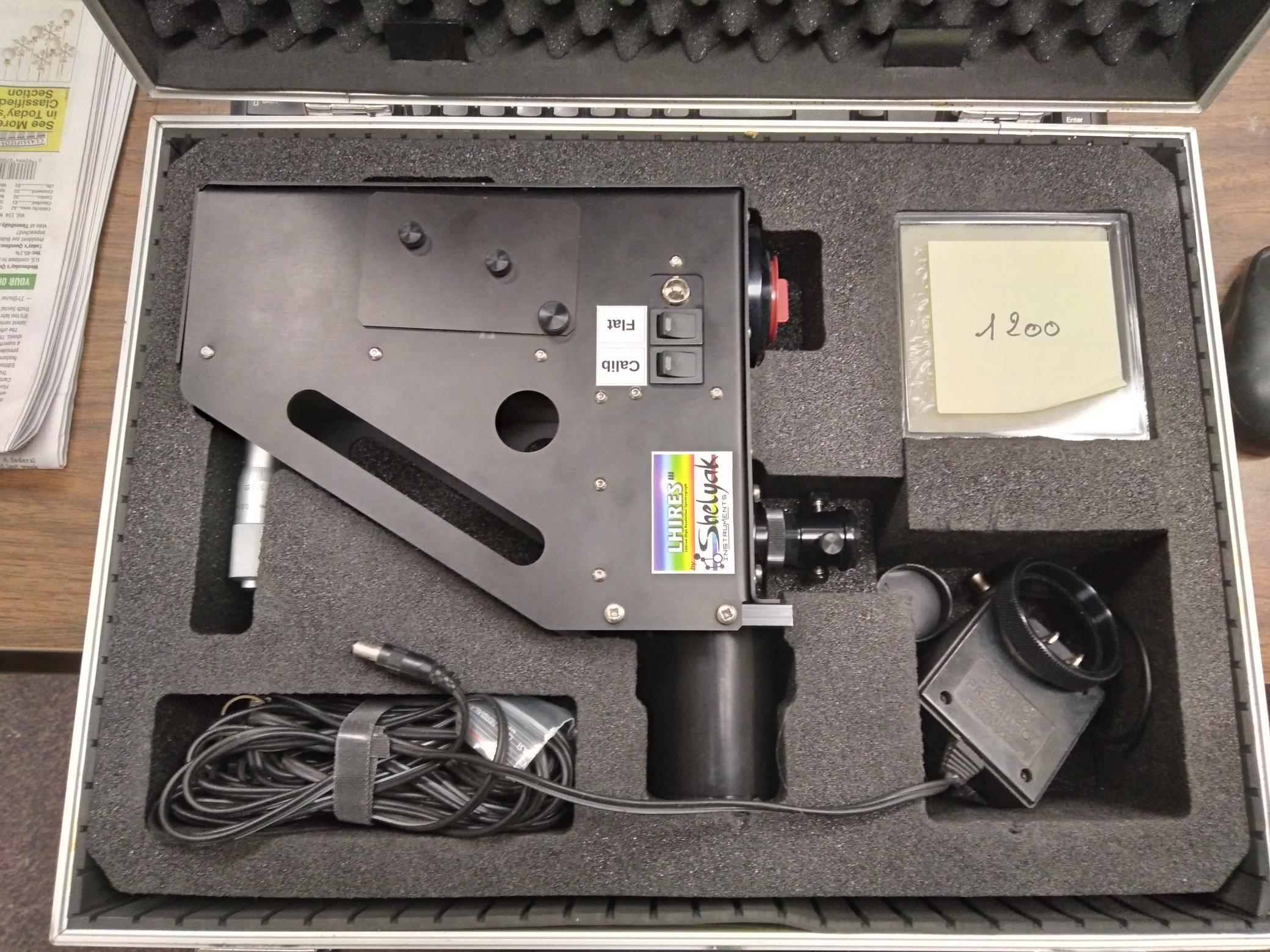
The LHires III spectrograph. We hope to study several types of emission line stars with this instrument.